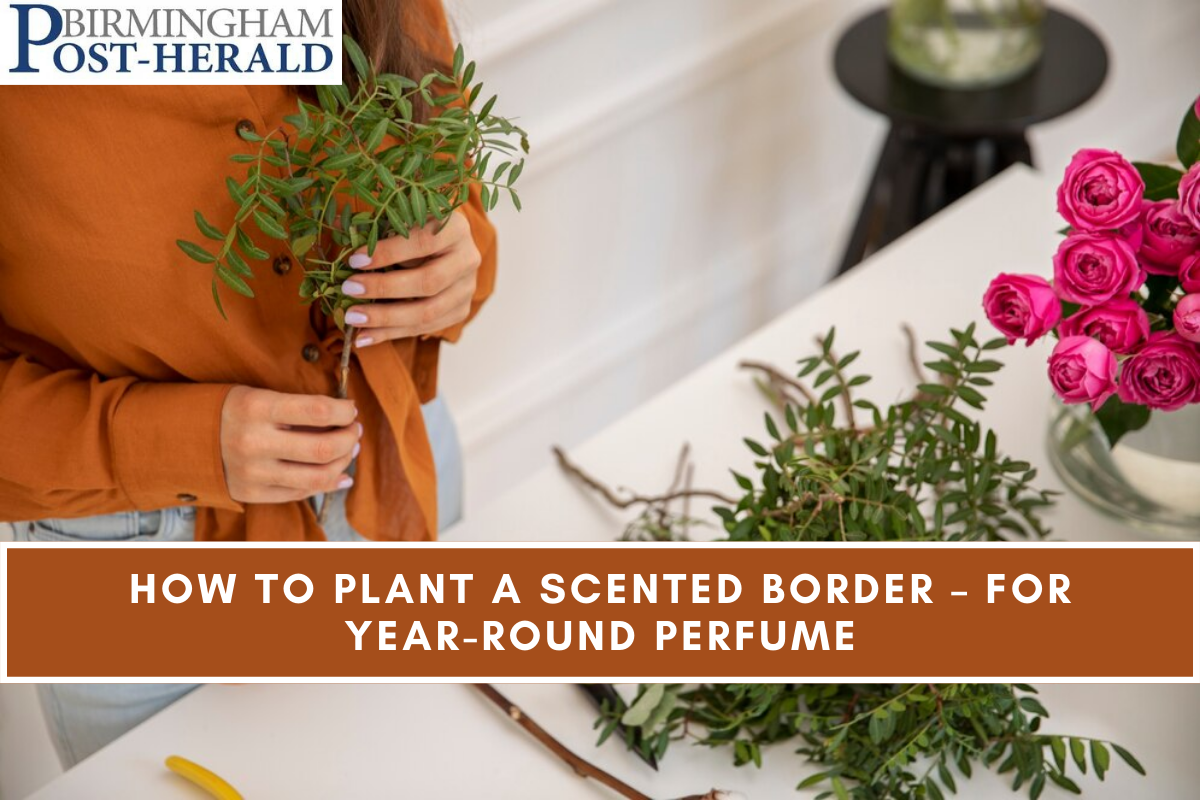How to plant a scented border – for year-round perfume:-Few things make our yards more joyful than a fragrant flower bed or border because scent is so potent and evocative. They are a delight for our senses, full with fascinating, vibrant trees, bushes, and plants that scent the air every month of the year and at all times of day and night. Furthermore, it’s rather simple to construct a scented border because there are so many plants to pick from that fill their surrounds with wonderful scents throughout the year.
Insects such as bees and others that do not completely hibernate can also find refuge and vital winter nectar from scented plants. Our garden does not have a formal perfume border, but it does have a number of fragrant plants scattered throughout that fragrance the air throughout the seasons. Many of these plants grow close to walks and seating spaces so that we can benefit from their scent as we brush against them.
How To Plant A Scented Border – For Year-round Perfume
Get To Know Your Soil
- Without knowing the pH levels of your soil, gardening is impossible, or at least extremely difficult.
- The majority of plants prefer neutral pH soils to thrive, however acid-loving plants—like rhododendrons and many heathers—are acclimated to acidic soils and will not grow well in alkaline soils.
- Likewise, plants that need alkaline or lime-rich soils—such as lilies, foxgloves, lilacs, and peonies—do poorly in acidic soils. These species are native to chalky soils.
- Testing your soil should be your first step.
- Although it may sound a little technical and unsettling, soil pH testing kits, like the one offered by Garden Tutor on Amazon, are readily accessible and simple to use. Typically, a small amount of dirt is placed into a phial of chemicals that have been produced.
- Slow growth and withering leaves are indicators that a plant is not thriving in its soil; plants that are dissatisfied in their soil seldom attain their full potential. But if you get the correct plants, you’ll save a ton of money and time.
Choose An Appropriate Site
- Pick a sheltered spot for your scented border; strong winds will cause even strongly fragrant bushes to lose their perfume very quickly.
- Choose a location that is manageable—I wouldn’t suggest choosing a spot with a high slope—and stay away from places that quickly dry out or get flooded.
- Avoid frost pockets, often referred to as frost hollows, which are parts of the yard where cold air condenses and prolongs the retention of snow or frost. Frost pockets are typically low-lying regions that may be shaded for the majority of the day.
- If you live close to the ocean, you will also need to plan for harsher winds and salty air while designing your bed; nevertheless, there are many different types of coastal plants that are suitable for this.
Also Read:- How About Red In A Bathroom? 5 Spaces To Convince You This Is The Finest Room To Try The Trending Hue
Consider How Much Sun And Shade You Get
- To determine how much light your border will receive, look at which way it will be facing. Attempting to sun-map your yard—taking pictures all year long to determine which spots receive the most and least amount of sunlight each day—is one method to do this.
- Generally speaking, borders facing east and north are better suited to shade-loving plants that would rather not be exposed to intense light and heat, while south and west-facing sections receive the greatest daylight and are therefore ideal for sun-loving Mediterranean garden plants.
- Take into account the surrounding structures as well, such as walls, buildings, and deciduous trees that provide shade in the summer but let in light in the winter.

Measure Your Border
- Scented borders might be round, wavy, linear, or as big or tiny as your yard would allow.
- Measuring their length and width can help you determine how many plants you need to fill the area without going overboard or leaving too many gaps.
- Keep in mind that a lot of herbaceous perennials die back in the winter, exposing the soil. For this reason, you might wish to select ground-cover plants, like sempervivums and heucheras, which conceal the dirt and provide interest throughout the year.
If you like this article about How To Plant A Scented Border – For Year-round Perfume Please share with your friends and family members.
